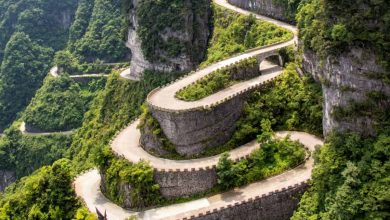Wildlife experiences you don’t want to miss on a trip to Uganda
/ 2023-04-10 19:21:19
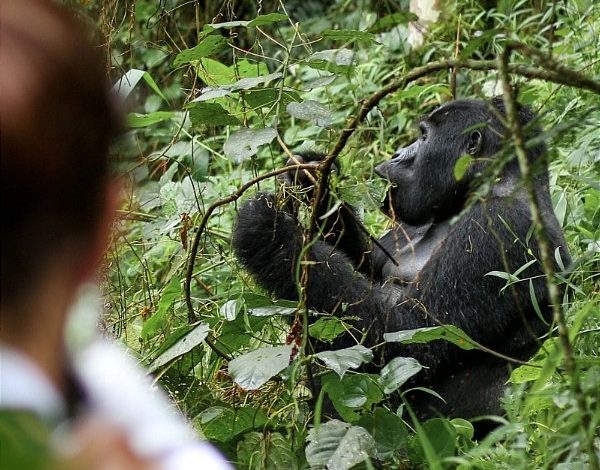
Diplomat.Today
Lydia Eva Mpanga
2023-04-10 19:21:19
——————————————-
Of all the many different holidays you can take on this vast planet, an African wildlife watching safari should be high on your bucket list, and Uganda promises nothing less than the rarest of wildlife experiences. If you’ve traveled extensively and are a passionate traveller, it’s hard to imagine not enjoying a wildlife experience in Uganda – even those who might think it’s not for them. A wildlife experience in Uganda is so satisfying and breathtaking. It reconnects you to the natural world that everyone should experience – that once-in-a-lifetime journey you could take every year for the rest of your life.
Unlike a castle, ruin or museum, Uganda offers living experiences full of living creatures. Every day on your journey will be different. You will see plenty of primates, elephants, giraffes and lions, but you may need to visit more than once to see and really enjoy a leopard, cheetah or gorilla. Uganda gives you the wildlife experience in forests, savannas and mountains which is rare in most wildlife destinations.
Besides the natural beauty and unimaginable grandeur of nature, the safari travel infrastructure in Uganda is fantastic. Some of the most luxurious safari lodges are on the edge of rainforest and savannah destinations. The best lodges have great services and excellent safari guides and lead tours in quiet national parks. The whole wildlife experience in Uganda is educational, entertaining and a non-stop thrilling ride, yet extremely relaxing.
If you are planning a wildlife vacation in Uganda, here are two of the most satisfying experiences you should include on your itinerary.
Watching with a giant silverback in the misty mountain rainforests of Bwindi Impenetrable National Park
Travelers who have been lucky enough to visit wild mountain gorillas in the forested mountains of southwestern Uganda speak of it as a profound, almost ethereal experience. Something in their expressions speaks to the heart of what it means to be a sentient being. It is even more meaningful to know that such visits contribute significantly to the well-being of these majestic animals.
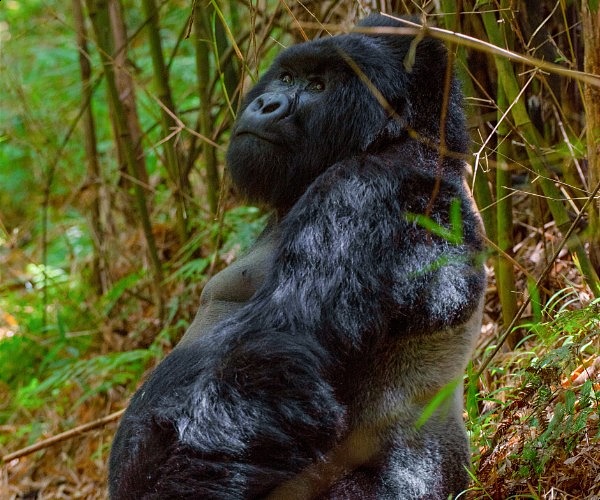
Unlike Rwanda and DRC, the other two countries with mountain gorillas, Uganda has two national parks that are home to more than half of the world’s last endangered mountain gorillas. Mgahinga National Park, located at the border triangle with DRC and Rwanda, shares habitat with Rwanda’s Volcanoes National Park and DRC’s Virunga National Park. The small park protects the slopes of three dormant volcanoes, making it a popular destination for day trips through incredible vegetation with a natural spectacle. While the scenery is quite mesmerizing, the most endearing adventure that would take you to Mgahinga is watching the endangered giant monkeys and cute little golden monkeys.
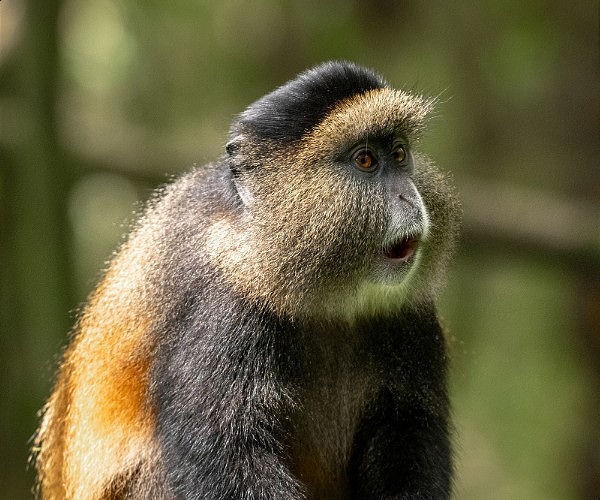
The extraordinary Bwindi Impenetrable National Park is the best place to visit the mountain gorillas in Uganda’s wilderness. With the largest population of mountain gorillas, Bwindi offers four park entrances with some of the most affordable and luxurious safari lodges, making the gorilla trekking experience accessible to more travelers.
For the gorilla trekking experience, you must book a trekking permit before departure and book a minimum of two nights in a safari lodge outside the park. Gorilla permits can be scarce and difficult to obtain, especially during peak season from June to August. So book with a reliable and vetted tour operator to make planning easier for you.
Mountain rainforests, where gorillas live, are steep and have a high elevation of about 8,000 to 13,000 feet – undoubtedly something to consider. However, it is not a technical climb, so most visitors will not need assistance. You may get short of breath, but you can get a local porter to help you, and the guides will take you slowly and steadily. You’ll find it easier if you prepare your body for the heaviness before you go. But no matter how much you sweat, how many muscles you stretch, how many tears you shed, from the moment you make eye contact with the Silverback, every moment is worth it.
IMPORTANT ANNOUNCEMENT:
If you are reading this article anywhere other than A Luxury Travel Blog, chances are this content has been stolen without permission.
Please note the web address above and contact A Luxury Travel Blog to notify them of this issue.
Thank you for helping us fight content theft.
Visitors gather at the visitor center in small groups of eight tourists for each habituated gorilla family and are led into the forest by a local expert tracker and two armed rangers.
And once you’re in the same area as the gorillas, you’ll see footprints and broken branches; the guides will ask you to unpack your bags and leave everything behind, which is when the nerves kick in because you know the giant beasts are around. At first you may not trust your eyesight when you see these huge, black and hairy bodies against the green. Your first glimpse may be a face half in shadow. Carefully you walk towards them. You may hear something behind you, turn around and see a young gorilla walking by. As you become familiar with your surroundings, you realize they are all around you – in front of you, next to you or some of them in the trees above you.
They are very similar to us. They live in family groups and are more or less concerned about the same things. They are emotional beings. A dominant Silverback, the leader, keeps the group safe and well-fed. Everyone in the group follows him. The females keep the babies and newborns with them to ensure their safety. You’ll see Blackbacks, which haven’t quite reached Silverback maturity, usually showing off as teens, restless, trump and bottlenose dolphin. And then, of course, the cutest babies and toddlers, who take their first hesitant steps and fall over, do somersaults and climb onto the backs of their patient Silverback fathers.
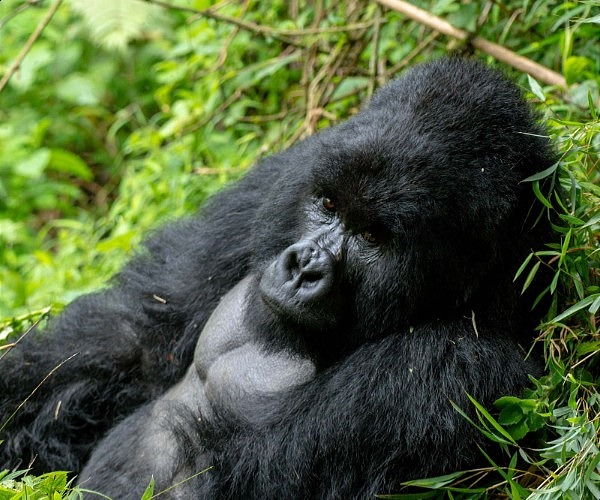
The gorillas can come to you, but you have to be sensitive. The rule is to stay about 10 meters (33 feet) from a gorilla. But expect the gorillas to be close to you. They can be at a safe distance and suddenly the Silverback will brush past you and step on your boots. There’s a lot you can do to stay safe. But to watch a Silverback walk past you is mesmerizing and heartbreaking.
This incredible experience is crammed into 60 minutes; that’s the thrill of the experience – that it could end at any moment while you’re still engrossed in the charm of the wilderness. And you keep your eyes open, and the closer you look, the more you see. Sixty minutes pass in the blink of an eye, and before you know it, you’re back at your lodge, looking down into the canopy and wishing to return to the wilderness.
Walk with a pack of wild chimpanzees in Kibale Forest
Imagine walking in an African tropical forest with hundreds of hyperactive chimpanzees swinging in the treetops above you and others walking a few feet beside you. It is one of the most exciting wildlife experiences in Africa that few travelers get to experience. And it costs a fraction compared to tracking gorillas in the mountains.

There are about 300,000 chimpanzees left in the equatorial forests of Africa, and about 5,000 find blissful refuge in the rainforests of Uganda. The best natural habitat to see wild chimpanzee troops up close is Kibale Forest National Park in western Uganda, where some of the troops are used to tourism and are within walking distance.

We all know that chimpanzees are our closest genetic family – they share about 98% of our DNA and human-like behavior that has attracted scientists to study them more than any other animal. Celebrated primatologist Dr. Jane Goodall first observed their amazing human-like behavior in the 1960s when she lived with a community of chimpanzees in Tanazania’s Gombe National Park. She then proved that chimpanzees hunt, forage, and use tools — ideas that were completely unknown about these creatures. Her fascination for the great apes is in us; that is why we are drawn to adventure
——————————————-



